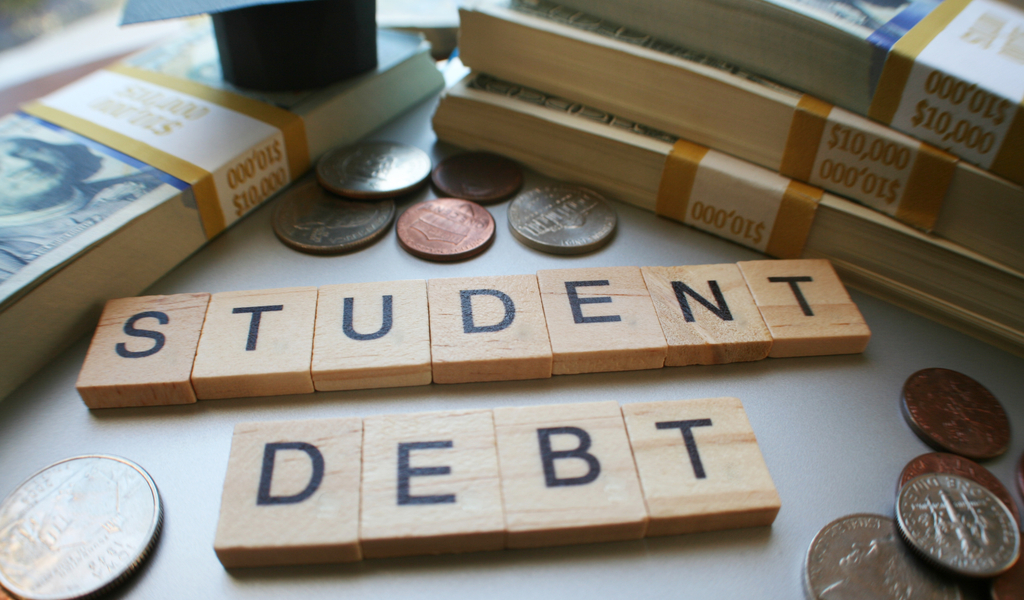Student loans now outpace credit card debt. Americans hold over $1.3 trillion in student loans, and the average college graduate leaves school with $37,000 worth of student debt. For graduates and their parents who are facing financial hardships as payscales wane and living expenses rise, filing for bankruptcy has become appealing. Student loans are typically not forgivable when filing for bankruptcy, but there are exceptions.
Chapters 7 and 13 Bankruptcy
Chapter 7 bankruptcy virtually never allows student loan forgiveness unless the borrower can prove undue hardship, while Chapter 13 filers can reduce or delay student loan payments for the duration of their repayment plan.
To qualify for Chapter 7, the borrower must pass a means test to determine whether they have sufficient cash flow each month to repay their student loans. If the borrower’s monthly income is lower than the area median income (AMI) for the same household size in their state, they automatically pass the means test. If it is higher than AMI, the means test becomes more complex as it examines disposable income and allowable monthly expenses for necessities that vary by state and region. If the borrower fails the means test, they can’t discharge student loans under Chapter 7 and can instead look into filing for Chapter 13 bankruptcy.

Filing for Chapter 13 bankruptcy doesn’t equal student loan forgiveness or cancellation of other debts. It’s referred to as a reorganization bankruptcy to consolidate and reduce debt repayments. The borrower has to prove that they can pay their debt, so a low or irregular income will work against them in Chapter 13 proceedings.
The Brunner Test and Undue Hardship
In bankruptcy proceedings, the court looks at the Brunner test which determines whether the borrower is suffering undue financial hardship and will likely never repay their student debt as a result. In order to discharge student debt, the borrower must meet all three conditions:
- Cannot maintain a minimal standard of living if the student loan repayments continue.
- The situation will continue for most of the repayment period.
- The borrower made a good faith effort to repay their student debt.
Housing, food, medicine, transportation, and other necessities are examined for the borrower’s household size and individual circumstances. Student loan payments are then factored in and the judge may be less inclined to claim this test was met if the borrower had federal loans, on account of the more generous repayment terms.
If the borrower is in a protracted state of financial distress resulting from a long-term illness, protracted unemployment or underemployment with no job prospects, homelessness, fleeing domestic violence, or other harsh conditions then the court is more likely to view that the situation will endure through the student loan’s repayment period.
If the borrower made some payments for their loans, it is usually seen as a good faith effort. Non-payment generally is looked down upon unless the borrower had extreme circumstances that prevented them from doing so. Borrowers with private loans are more likely to have them forgiven since repayment terms are not as generous as federal loans.
For borrowers living in Indiana, Illinois, and Wisconsin (the Seventh Court Circuit), the courts in those states adhere to a more liberal interpretation of the Brunner test. Non-payment is not factored in as heavily depending on the financial situation of each borrower, based on the extenuating circumstances in the 2013 case Krieger v. Educational Credit Management Corp.
For borrowers everywhere else, these three tests must be met according to the judge. If payments are not being made, it looks like there is a reasonable possibility the borrower’s income will rise, and they are otherwise able to pay their living expenses, it’s unlikely that filing for bankruptcy will discharge their student debt. In extreme financial duress however, it’s possible to discharge student loans bankruptcy court.



